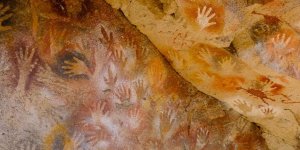| News / Science News |
Coronavirus simulations completed on supercomputer
Scientists are preparing a massive computer model of the coronavirus they expect will provide new insights into how the virus infects the body.

A coronavirus computer model is being developed by National Science Foundation-funded scientists. Photo: TACC
Biochemist Rommie Amaro at the University of California, San Diego and her team are leading efforts to build the first complete all-atom model of the envelope -- the exterior component -- of the SARS-CoV-2 coronavirus.
The researchers have taken the first steps, testing the first parts of the model and optimizing code on the NSF-supported Frontera supercomputer at the University of Texas at Austin. The knowledge gained from the full model will help researchers design new drugs and vaccines to combat the coronavirus.
Amaro says that "if we have a good model for what the outside of the particle looks like and how it behaves, we're going to get a good view of the different components that are involved in molecular recognition."
Molecular recognition is the way the virus interacts with the ACE2 receptor -- angiotensin converting enzyme 2 -- and possibly other targets in the host cell membrane.
The coronavirus model may contain some 200 million atoms, a daunting scientific undertaking as the interaction of each atom has to be computed. The team's workflow takes a hybrid, or integrative modeling, approach.
"We're trying to combine data at different resolutions into one cohesive model that can be simulated on leadership-class facilities like Frontera," Amaro said.
"We basically start with the individual components, where their structures have been resolved at atomic or near atomic resolution. We carefully get each of these components up and running and into a state where they are stable. Then we can introduce them into bigger envelope simulations with neighboring molecules."
Added Edward Walker, a program director in NSF's Office of Advanced Cyberinfrastructure, "Discovering a cure for COVID-19 requires a fundamental understanding of the viral biology of this lethal pathogen. (National Science Foundation)
YOU MAY ALSO LIKE





